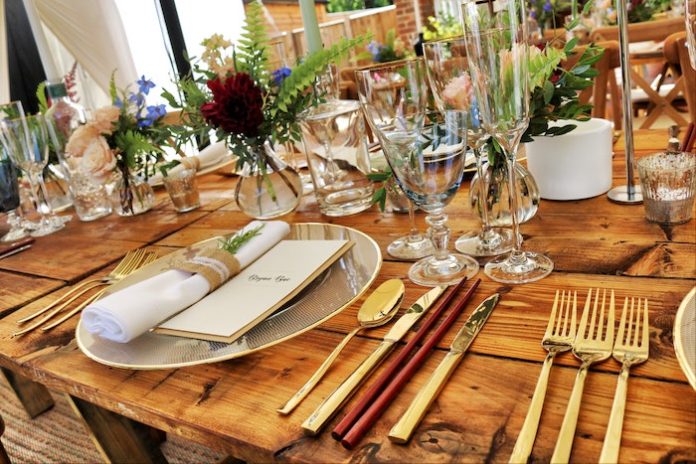Is your company planning to throw a big event, like a party for VIP clients\? Yes, the design of an event space makes a huge difference, but event design and branding are about much more than just the event space at the time of the event. In fact, event design and branding carry through from the initial event communication to the event itself, and even well beyond the end of the event. So, let’s take a closer look at event design and branding as well as things to keep in mind for your next event.
What Is Event Design?
Event design is the process of creating a vision for your event and then designing and putting together all of the details to transform your event and event space into the vision you created. In other words, it is how you bring your event vision to reality through the use of aesthetics and visual elements. This is where choosing the theme of your event becomes important. You can pick a pattern or multiples to set the tone of your event and apply the pattern to not only tabletop decor, but also to furniture, flooring, stationary, installation, cake, and more. This concept of event design is closely related to event branding and event themes.
What Is Event Branding?
Event branding—in its simplest form—is what your event looks and feels like. It is how you create a mood or atmosphere that reflects your brand and adds personality and heart to your event by focusing on aesthetic details. Ask yourself: If my brand was a person, what would its personality be? Fun or serious? Friendly or inspirational? Whether your event is a private event, a charity event, or a corporate event—you can create a vibe for your event that will connect and resonate with your audience and create the experience you envisioned. So, let’s take a look at a few tips for event branding and design that will help you take your special event to the next level.
1. Define Your Unique Brand
Depending on the type of event you are designing, you will want your brand to reflect that event and its personality. Your event brand includes the following factors:
- Values
- Purpose
- Colors
- Imagery
- Persona
- Fonts
- Décor
When planning an event, it is important to define these brand elements, because they’ll be used as the basis of all your event communications and will carry through to the event itself.
2. Create a Name, Tagline, and Hashtag
When planning an event, you need to create a name, tagline, and hashtag to increase event awareness and attendee engagement. For the name of your event, keep it short and sweet so it’s easy to remember.
For the tagline, keep this short and sweet as well but think of what you are offering to your audience and why you created the event. And finally, create a hashtag that will work to increase awareness of your event, get people talking, and provide a place for guests to share event memories with others.
3. Use Unique Layouts, Seating, and Food Displays
Creating a unique layout, seating, and food displays can all work to engage guests and help your event stand out from the rest. Brainstorm creative ways on how the event space can best be utilized; stay away from boring, traditional, and uncomfortable seating; and use unique food displays to attract attention and add an exciting element to your event design. This is where custom design can be used effectively.
4. Ensure Event Décor Is On Brand
Inconsistency is a brand killer—so make sure all your décor is on brand, complements other aspects of your event, and serves the overall vision of your event design and branding. Stay consistent from the first event communication all the way through the end of the event and beyond to build trust with your guests. Your invitation, email announcements, social posts, and tabletop decor should all reinforce the brand vision your event will embody.
5. Focus on Guest Experience
Your event will be judged the minute your guests arrive and start noticing the details—and in fact, your event might even be judged with the first event communication (like an invitation). Make it easy for guests to connect, share, and engage before, during, and after your event in order to create a more memorable experience for your guests. And remember, tie everything back to your event design and brand to ensure a seamless experience.
The key is providing a positive experience that makes your guests want to return or to keep up with your brand, and one of the ways that can be achieved is by repetition. For example, use one set of patterns but in different colors or in multiple media before the guests arrive at the event. What we love the most at Lola Valentina is to design a few patterns and use them from the moment guests receive an invitation all the way to when they take their gift bag home at the end of the night. So even before the event, the guests have an idea that aligns with the actual event experience.
Find a Home-Based Business to Start-Up >>> Hundreds of Business Listings.

















































